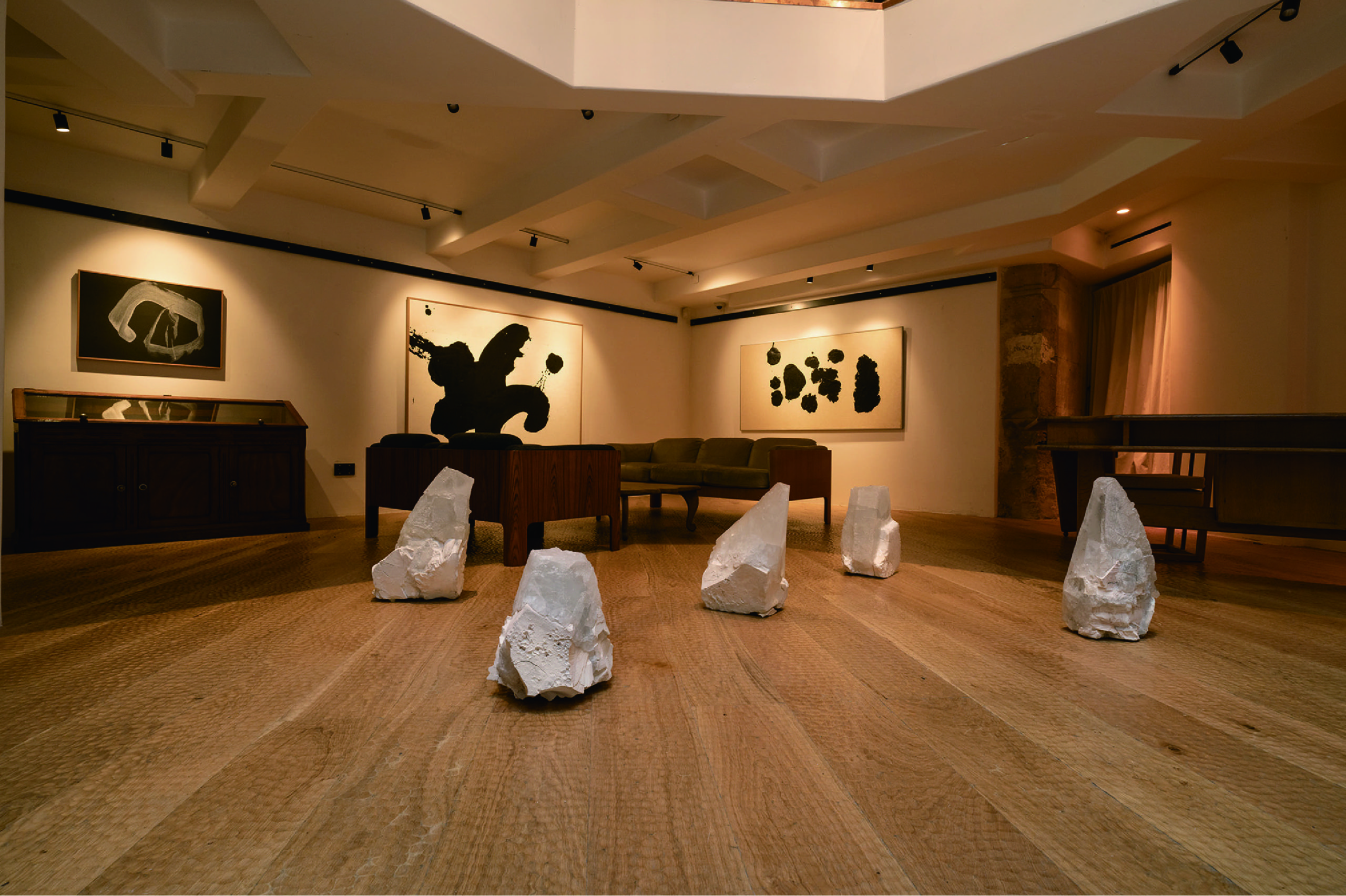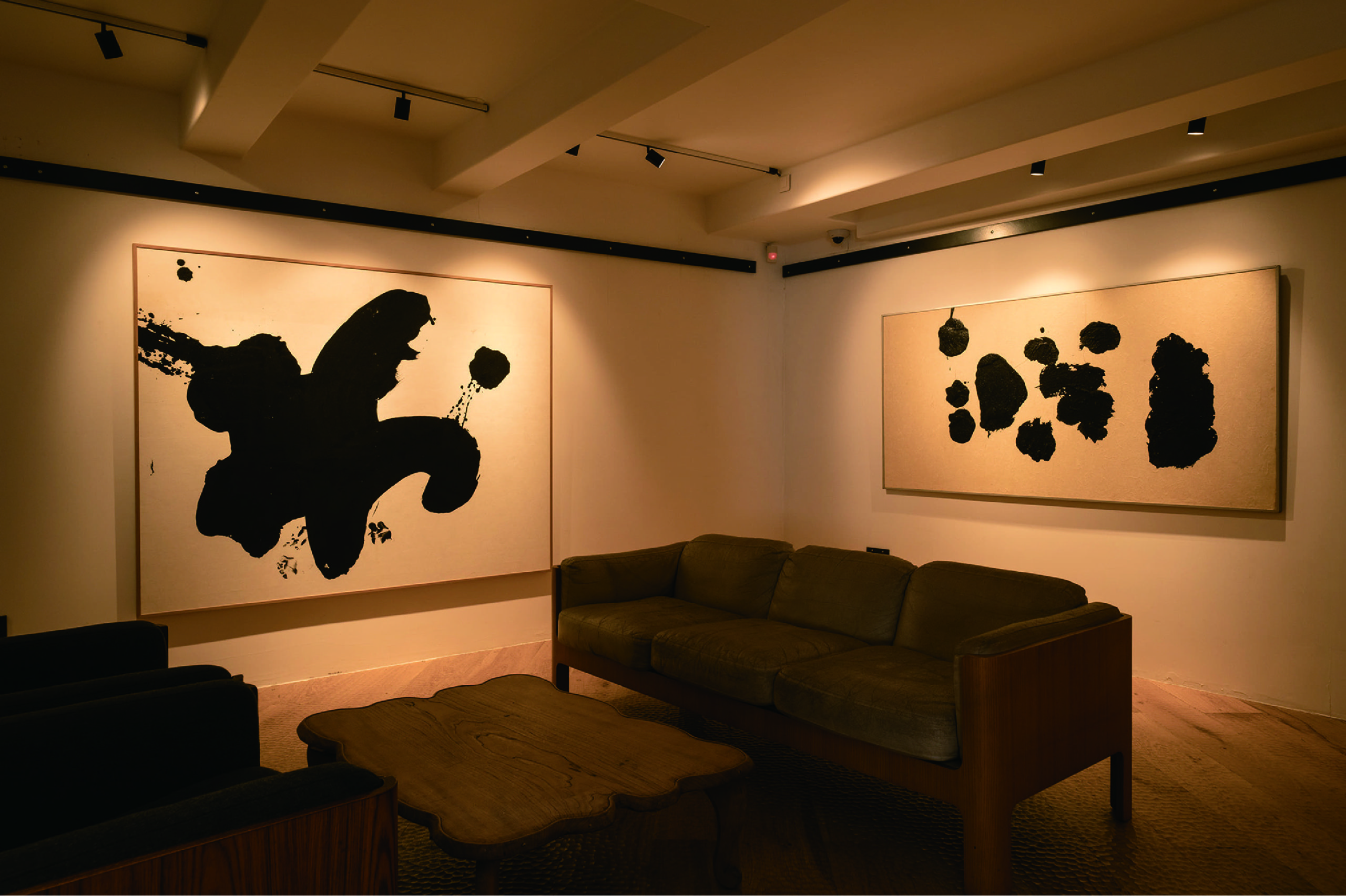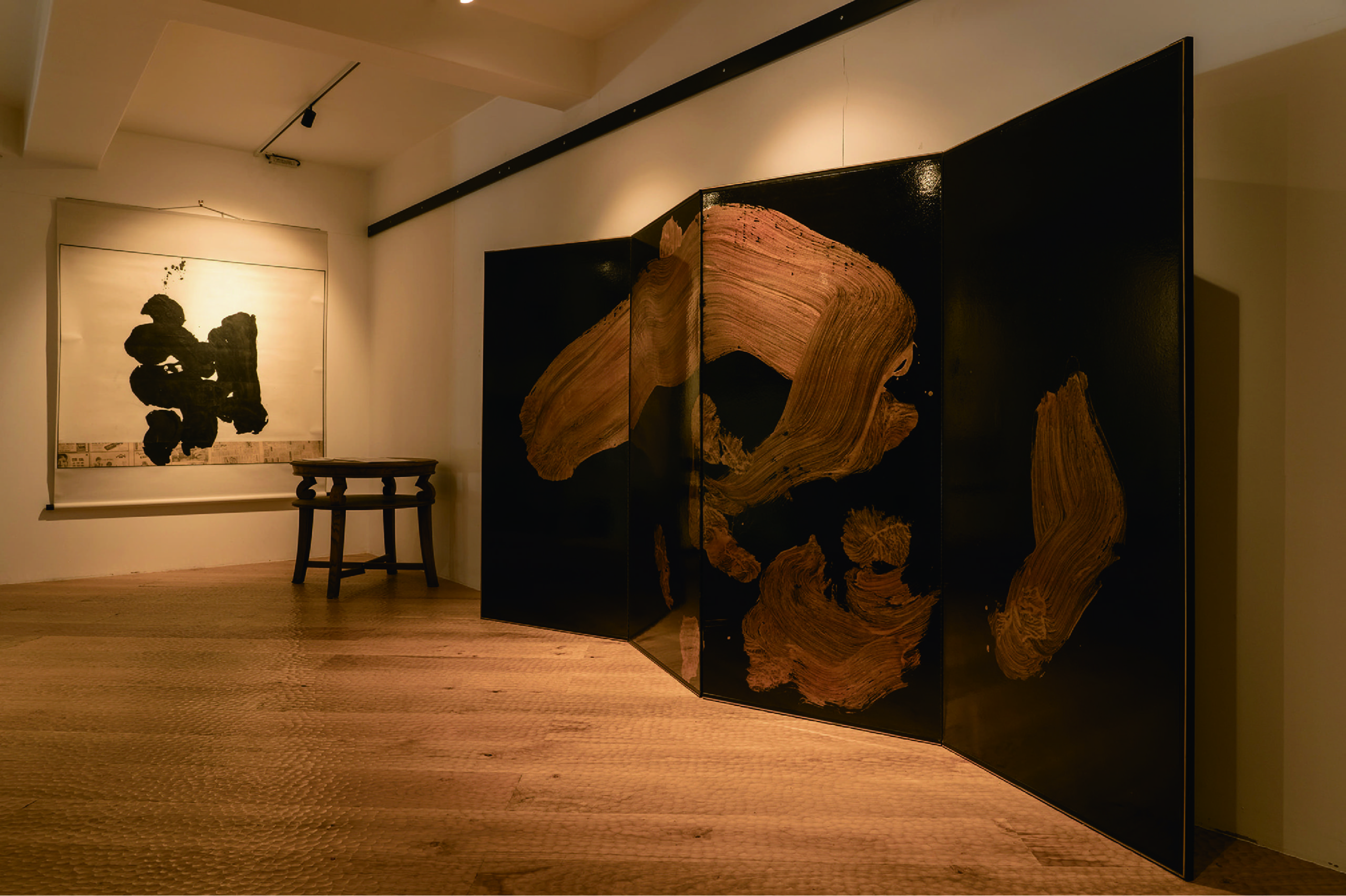




OGATA presents a selection of works by Morita Shiryū (1912-1998), the master of Japanese postwar calligraphy.
Morita Shiryū was a key person in the development of avant-garde calligraphy in the 20th century. His desire to re-evaluate the Japanese art of calligraphy within the larger, international framework of contemporary art led him to radically renew its expression, discover new relationships with other artistic practices of his era, and strengthen his art’s influence on an international scale. By rooting his creative practice in a direct but thoroughly thought out expression, informed by the spirituality and the philosophy of his epoch, Morita along with his peers developed an art form at the intersection of the calligraphic sign and abstract painting. In doing so, he had a considerable influence on Japanese pictorial avant-gardes (especially the group Gutai, close both geographically and aesthetically), and through them, on Western postwar abstract painting.
Both an artist and a magazine editor, Morita established an international following in the 1950s, reinforced by his participation in numerous exhibitions in Japan and abroad, as well as the circulation of his publication – real though limited –in the West. As early as 1953, Morita exhibited at the Salon d’octobre. The present selection of works from the fertile period of the 1960s offers a new perspective on this fundamental corpus, which inspired reflections on the relationship between abstract form and semantic signification, as well as on the fusion of creative disciplines largely compartmentalized until then. These issues constantly nourish the reflection led by OGATA on the present forms of Japanese aesthetics.
A multi-faceted work of art
Born in 1912 into a farming family in Toyooka (Hyōgo prefecture), Morita Kiyoshi was a precocious talent. He studied calligraphy with Ueda Sōkyū (1899-1968) from 1937, when he moved to Tōkyō. His work was crowned with prizes the following year, but the war forced him to take refuge in the countryside. It was a fertile period for Morita Shiryū, who devoted himself to an in-depth study of historical documents relating to Japanese calligraphy, and to a reflection on the status and ambitions of his art in the 20th century. This work led to the foundation in 1948 of the magazine Sho no bi (Beauty of calligraphy) which appeared until 1952.
It was in 1950 that Morita moved to Kyoto, where he made the acquaintance of important philosophers, notably the specialist in aesthetics Ijima Tsutomu (1908-1978) and the specialist in Buddhism Hisamatsu Shinichi (1889-1980). This new setting inspired the artist as much as the publisher in Morita, who in 1951 founded the magazine Bokubi (Beauty of Ink). This publication, through 300 eidtions, would exercise until 1981 a fundamental theoretical and educational role for the development of avant-garde Japanese calligraphy. From its foundation, the journal had seven objectives that should be remembered: aesthetic elucidation of calligraphy; contextualization of calligraphy in human activity in general; establishment of calligraphy as a discipline based on modern artistic theory; contextualization of calligraphy among all the arts; expanding calligraphy globally; examination and clarification of the classics; improving the social position of calligraphy.
The Bokujinkai group of calligraphers was founded in 1952 by Morita and four other artists, notably the famous Inoue Yūichi (1916-1985). Morita was a member of the group until 1978. The year 1953 was marked by his participation in the Salon d’octobre, and 1954 by his participation in the exhibition on Japanese calligraphy at the Museum of Modern Art in New York. Morita’s fame spread further to the West in 1963, when he toured Europe and the United States, accumulating lectures and demonstrations of his art. The last three decades of his life were punctuated by prizes and decorations, and marked by a sustained editorial rhythm. Of particular note is the book In / Chiffres published in 1980 with Roger Caillois.
As much by his intellectual and artistic associations, by his centers of interest expressed in his journals as by the multifaceted influence exerted on contemporary and later generations of calligraphers and artists, Morita Shiryū appears today as a fundamental pillar in the development of abstract art in Japan at a crucial moment in the history of art: that of the junction between traditional calligraphy and abstract painting, between Japanese avant-gardes and artistic experiments on a world scale, between reinterpretation of so-called traditional Japanese culture and thought and establishment of a new artistic expression for the international community.
En collaboration avec SHIBUNKAKU
